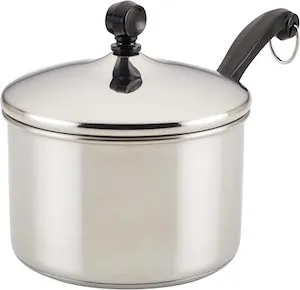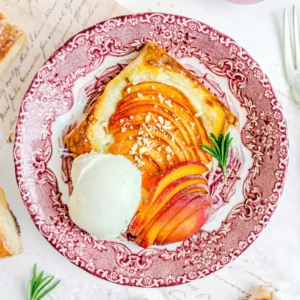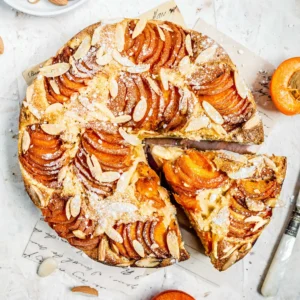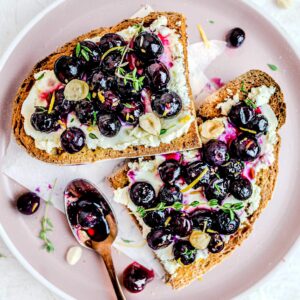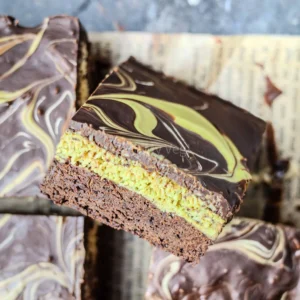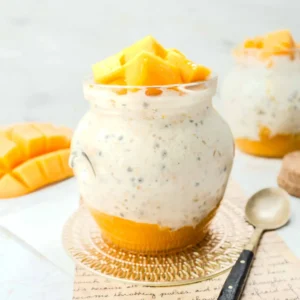Mango Modak
Modak — but make them eye-catching, fun, and full of tropical flavour. These mango modak are a divinely flavoured, auspicious twist on the traditional Maharashtrian sweet.
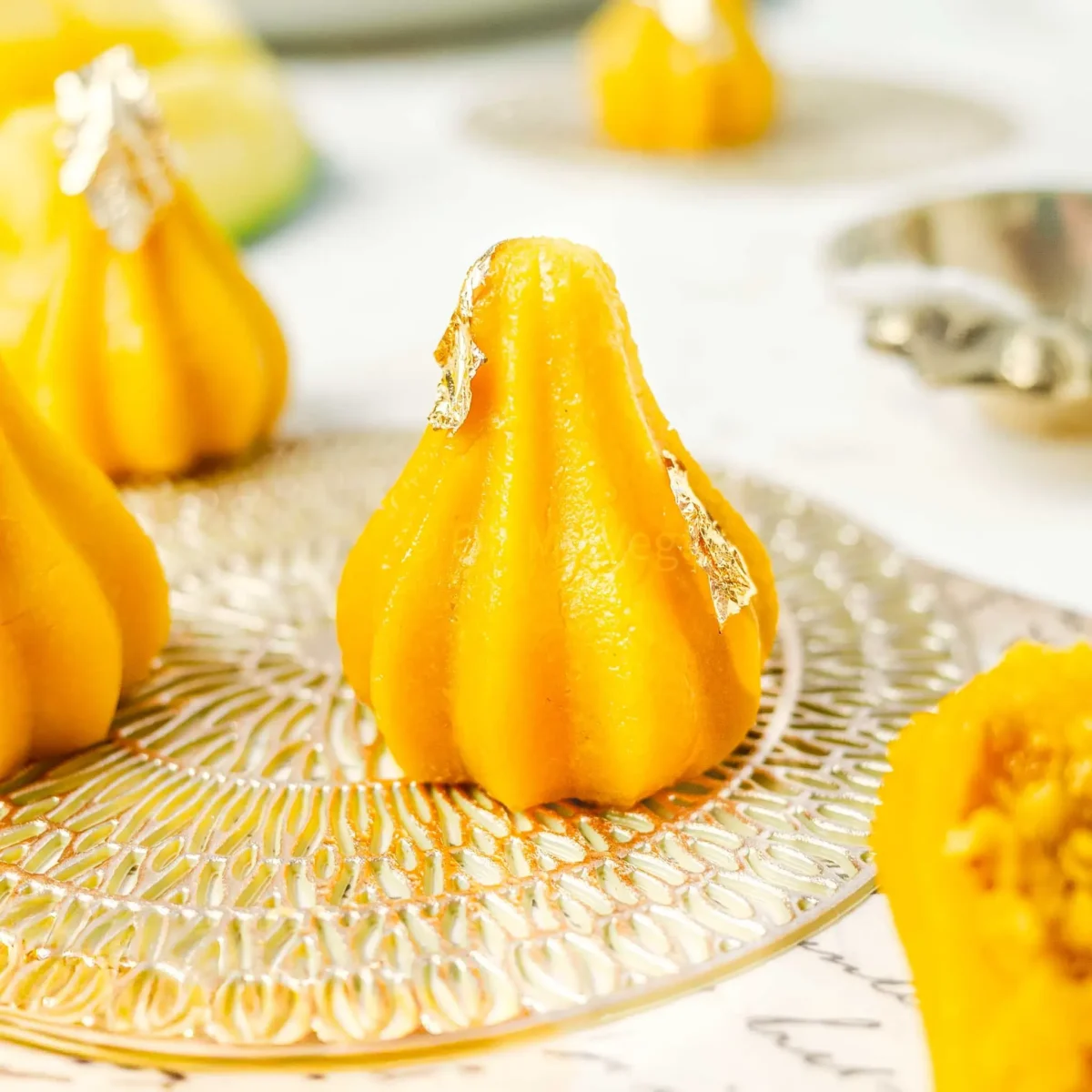
Traditional ukadiche modak are always a favourite, but recently, I’ve been experimenting with more fun, modern flavours.
This year, my kitchen has been a full-on mango fest: mango pancakes, mango shrikhand, aamras, overnight oats with mango, even a mango crepe cake. I’ll admit it… I wasn’t ready to say goodbye to mango season just yet. So, mango modak felt inevitable.
This recipe marries the nostalgia of classic steamed ukadiche modak with the tropical sweetness of ripe mango. The rice flour dough is infused with mango pulp, creating a softer, vibrant-coloured outer-layer with a heavenly aroma.
And the jaggery-coconut filling? It’s simmered with mango too — adding a bright, tangy lift to complement the jaggery’s deep, caramel-sweet complexity.
It sounds cliché, but it’s true: every bite is a celebration of mango. It’s festive — but not fussy. It’s the perfect food for Ganesh Chaturthi, but I won’t judge if you make the mango modak for yourself. They’re an absolute joy to eat, and encapsulate Marathi flavours.
❓ What is Modak?
Modak is a traditional Indian sweet dumpling, often made with a rice flour shell and coconut-jaggery filling, and especially popular during Ganesh Chaturthi.
They’re usually shaped like little pleated pyramids. Many people use moulds to help create the delicate shape, but some experts use only their hands.
Modak can be steamed (like ukadiche modak, the most well-known style) or fried until golden. Over the years, people have developed diverse creative variations (such as this mango modak!), some of which don’t require steaming at all — like chocolate modak.
😍 Why You’ll Love Mango Modak
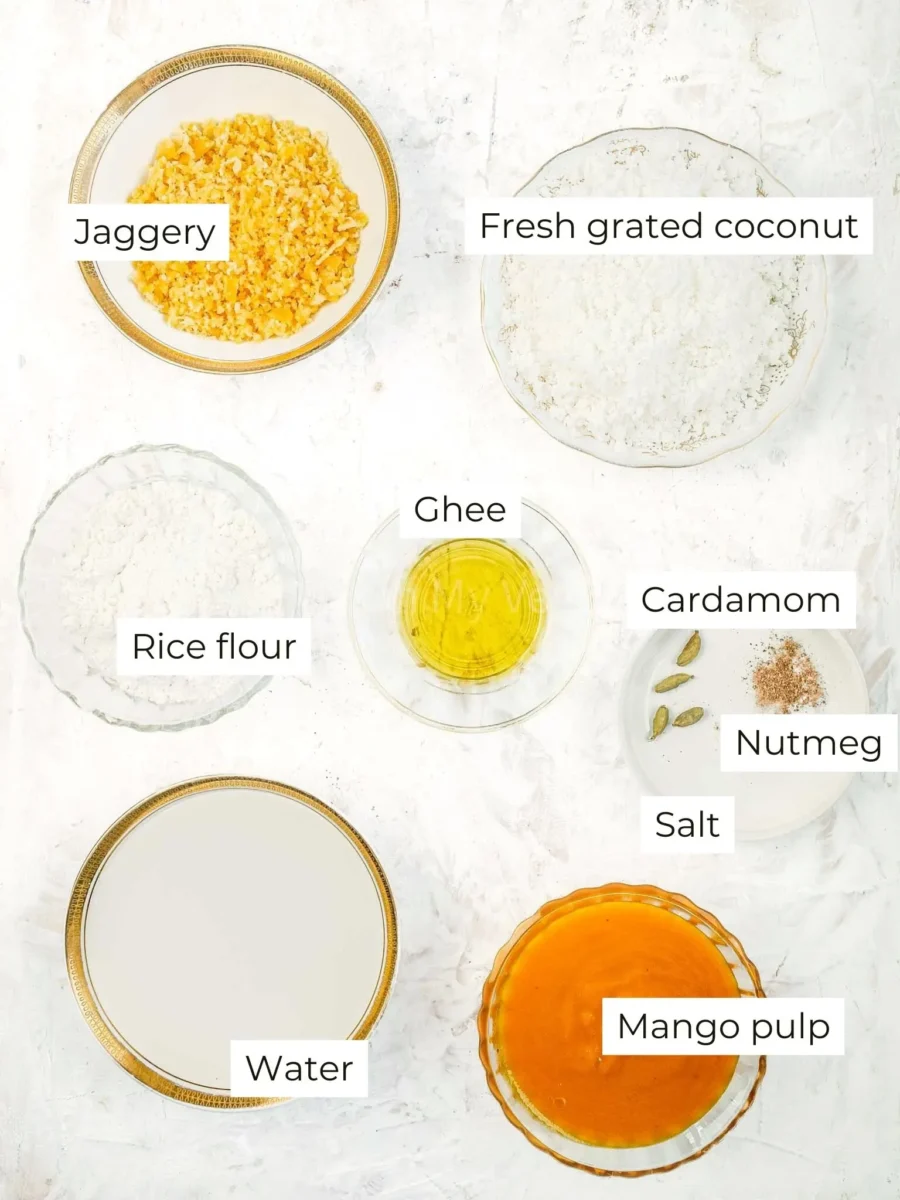
🥥 Ingredients For Mango Modak
This mango modak recipe takes inspiration from the beloved ukadiche modak, so you’ll see a few familiar faces: soft rice-flour dough on the outside, and a sweet coconut–jaggery filling at the heart.
But here’s where things get exciting — this version is all about mango. We mix sweet, fragrant mango puree into both the dough and the filling for a burst of divine, fruity flavour in every part of the modak.
Best of all, you only need a small handful of ingredients to make these festive treats:
- Rice flour: The main ingredient we need to create the soft outer dough of the modak. You can find rice flour at Indian specialist stores.
- Mango pulp: Since Indian mango season is over by the time Ganesh Chaturthi begins, I use tinned/canned mango pulp. I highly recommend using alphonso (hapus) mango pulp; this sweet, non-fibrous, creamy, and fragrant Maharashtrian variety is known as the “king of mangoes” for a reason, and is my top choice for desserts like aamrakhand, mango pancakes, and mango modak! However, Kesar mango pulp makes for a fantastic alternative. We use the pulp in both the coating and filling, for maximum mango flavour!
- Fresh grated coconut: For the sweet, tropical filling. Freshly grated coconut is worth the fuss, but desiccated will work in a pinch.
- Jaggery: An unrefined cane sugar that adds a distinctive caramel-like sweetness to the modak, pairing beautifully with the mango. I do not recommend substituting for white sugar.
- Ghee: Indian clarified butter. Its nutty taste and beautiful aroma is essential to bring richness for the dough and filling.
- Cardamom powder: Warm, floral, and with an unmistakable touch of spice, green cardamom powder is essential for Indian sweets. Grind your own or buy ready-ground.
- Nutmeg powder: Another essential spice for Maharashtrian desserts, nutmeg builds on the warm, earthy tones of cardamom, while adding sweetness.
- A pinch of salt: Just to lift the other flavours.
You’ll also need plenty of water to make the dough for our modak.
Is Mango Modak Suitable For Dietary Requirements and Allergies?
Yes! This mango modak recipe is naturally gluten-free, nut-free, and soy-free (and, of course, vegetarian).
And if you’d like to make them vegan and dairy free, it’s an easy swap — simply replace ghee with your favourite vegan butter (I like Miyoko’s cultured vegan butter (U.S.) or Flora plant butter (U.K.). Do not be tempted to use vegetable ghee (or “better ghee”), as I’ve found it has a particularly egregious artificial flavour that lingers in the food.
♨️ How to Make Mango Modak
Indian sweets can be intimidating to make, and modak is no different.
However, when you break down the different steps, it doesn’t seem so overwhelming. That’s why I’ve also taken step-by-step photos so you can see how each step of the cooking process should look.
I highly suggest using a modak mould to simplify the process even further. Shaping the modak by hand is by far the most difficult step of the process. Everything else is surprisingly simple to master.
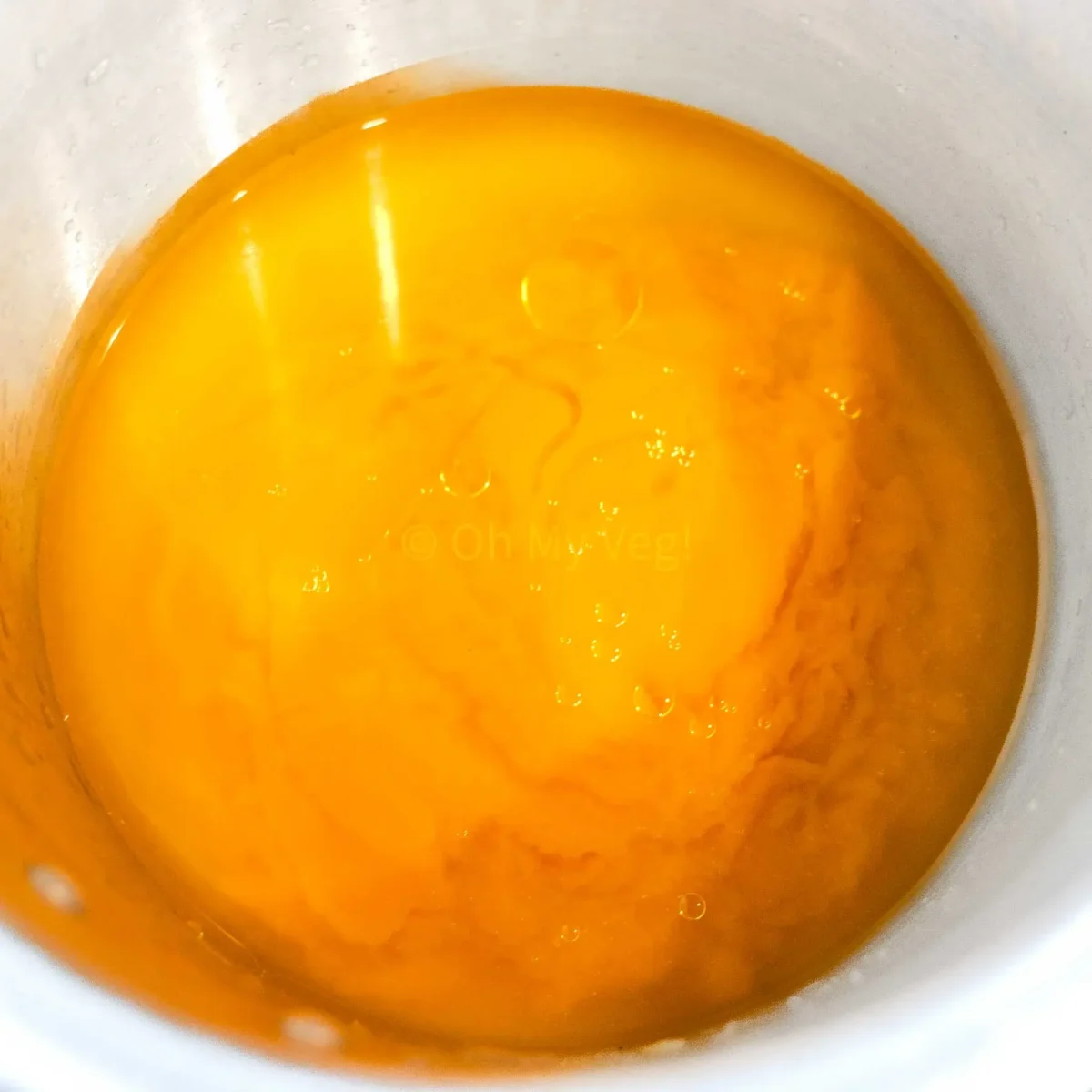
One: Add water, mango pulp, a pinch of salt, and ghee to a large saucepan. Bring to a boil over medium heat.
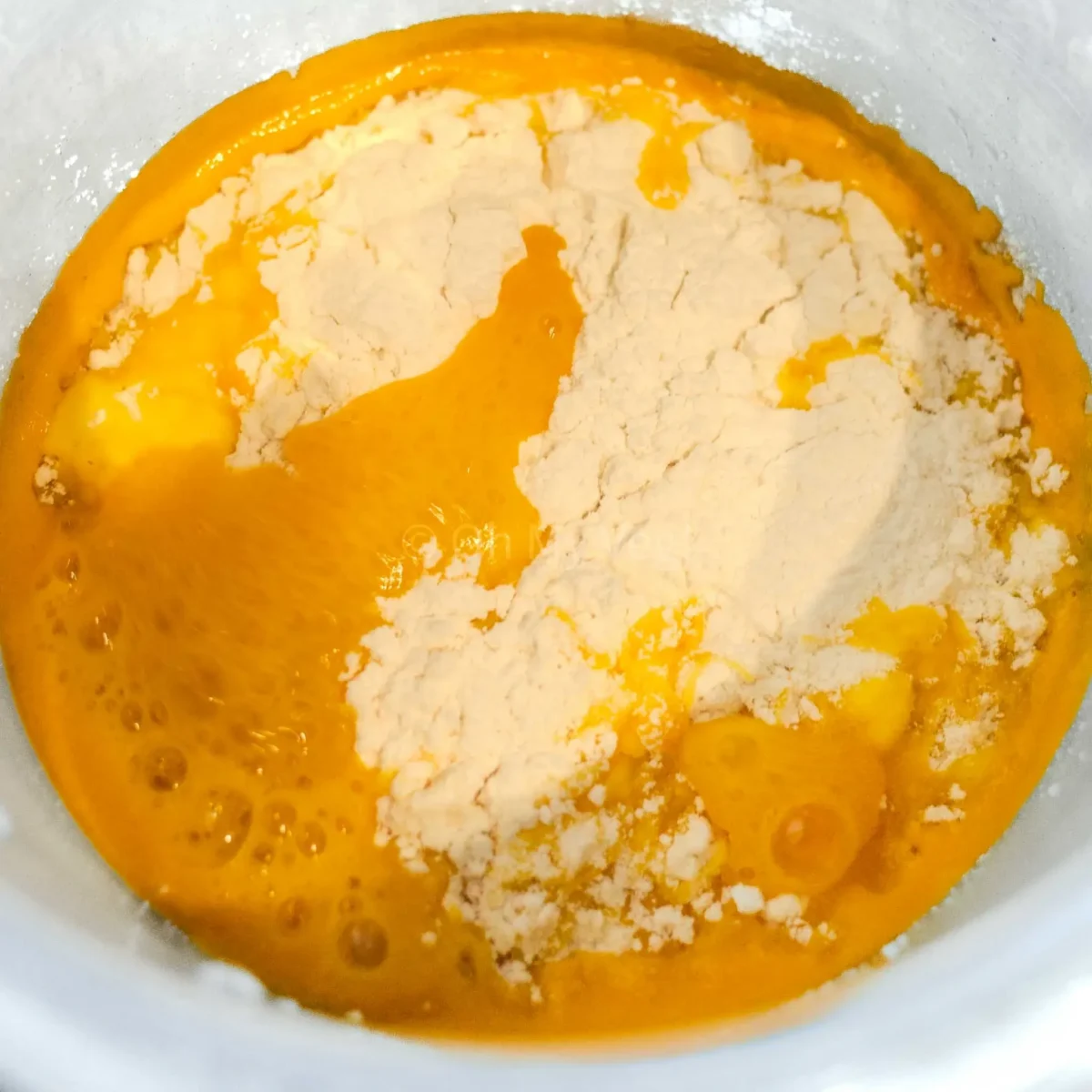
Two: Once boiling, add rice flour. Immediately shut the heat.
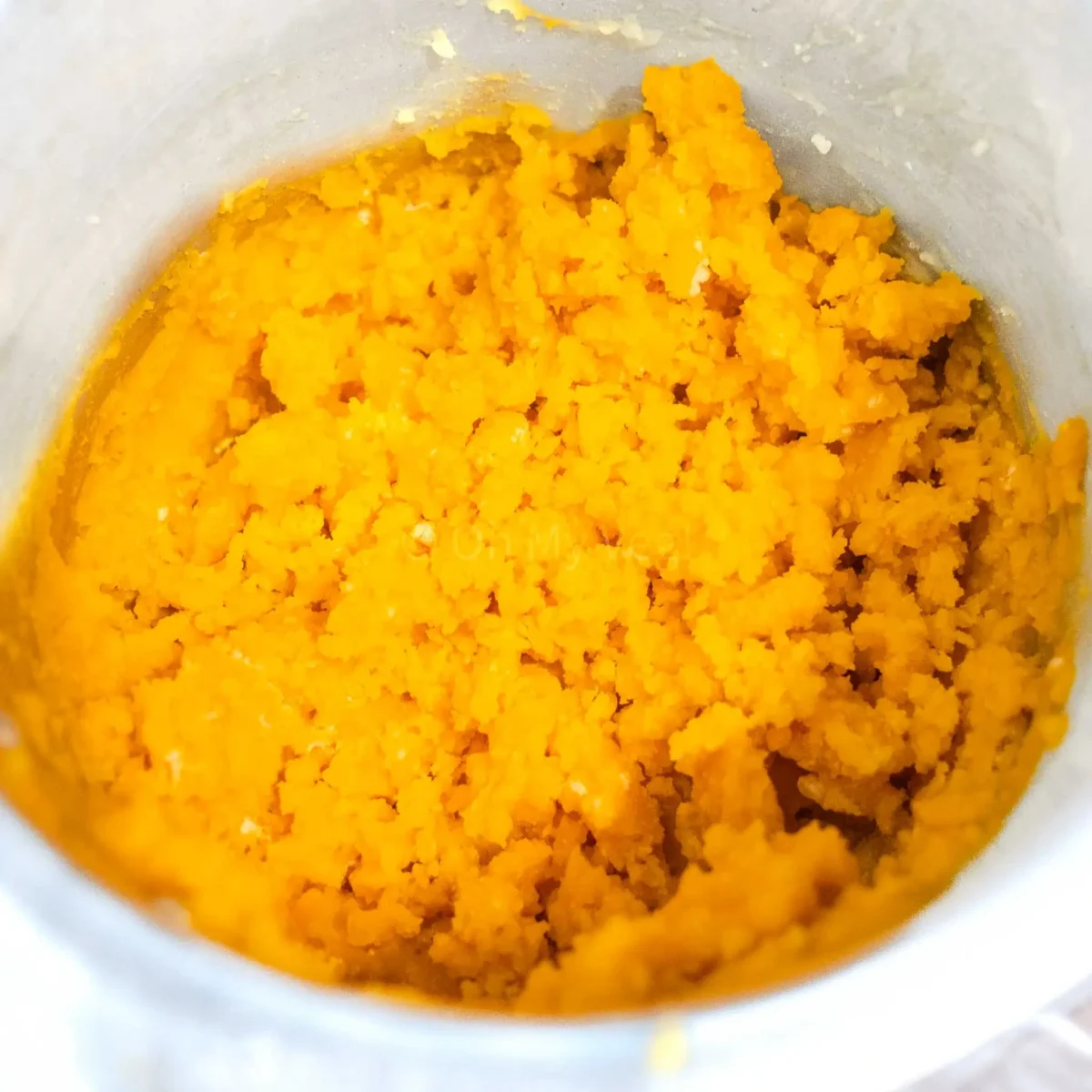
Three: Stir the rice flour into the liquid. Cover the pan and leave to steam in the residual heat.
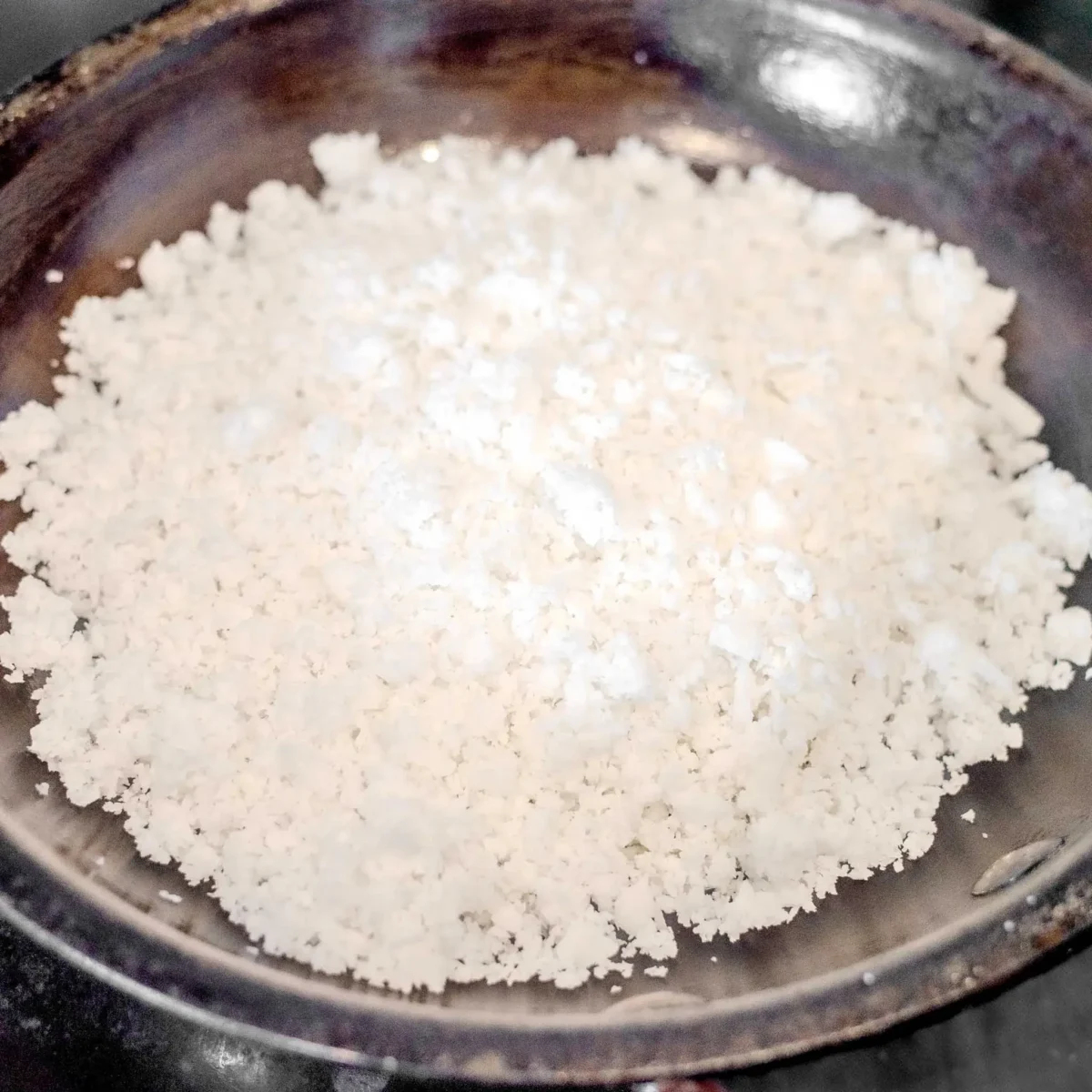
Four: Add ghee to a small frying pan over medium-low heat. Once melted, add freshly grated coconut.
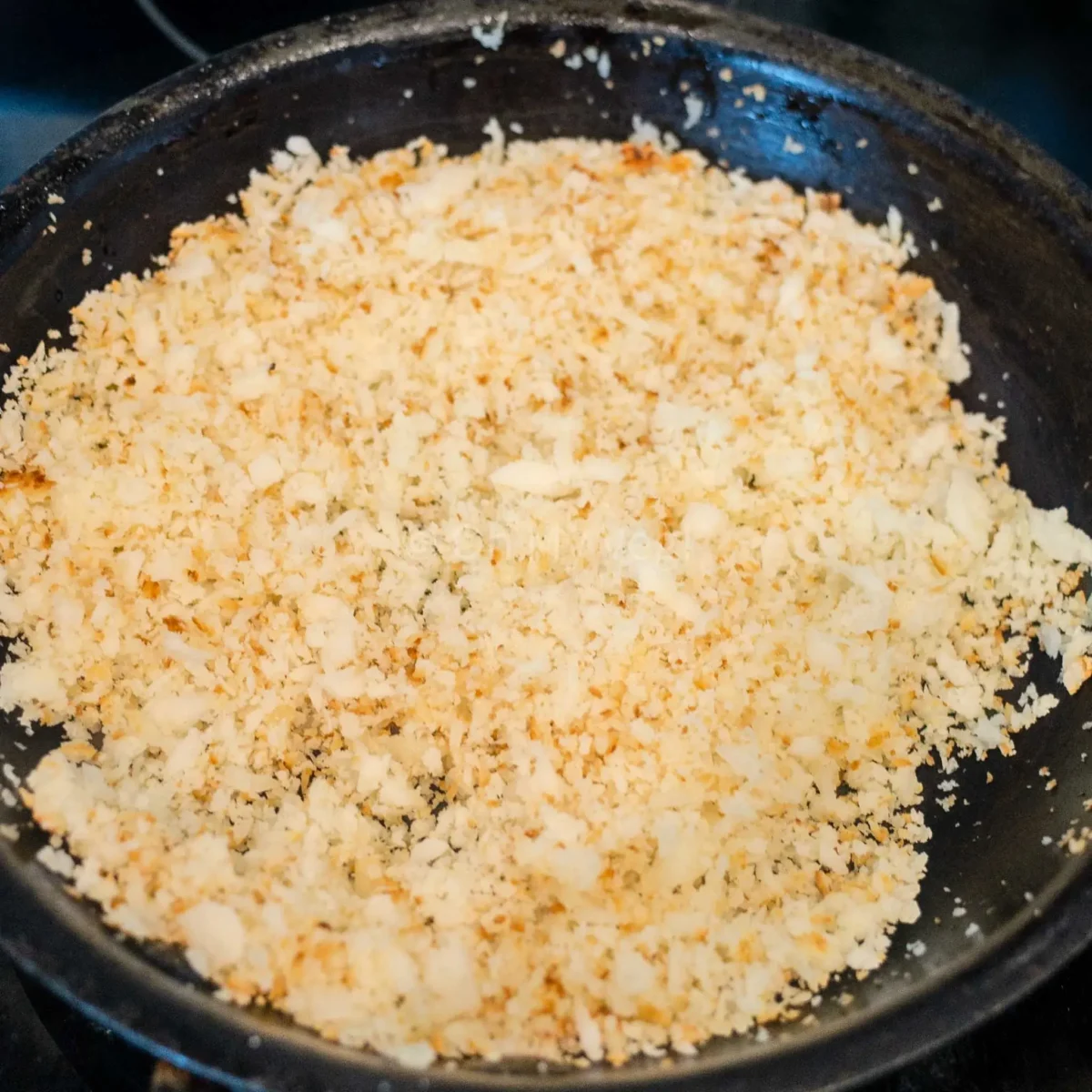
Five: Fry the coconut, stirring regularly, until it’s beautifully golden.
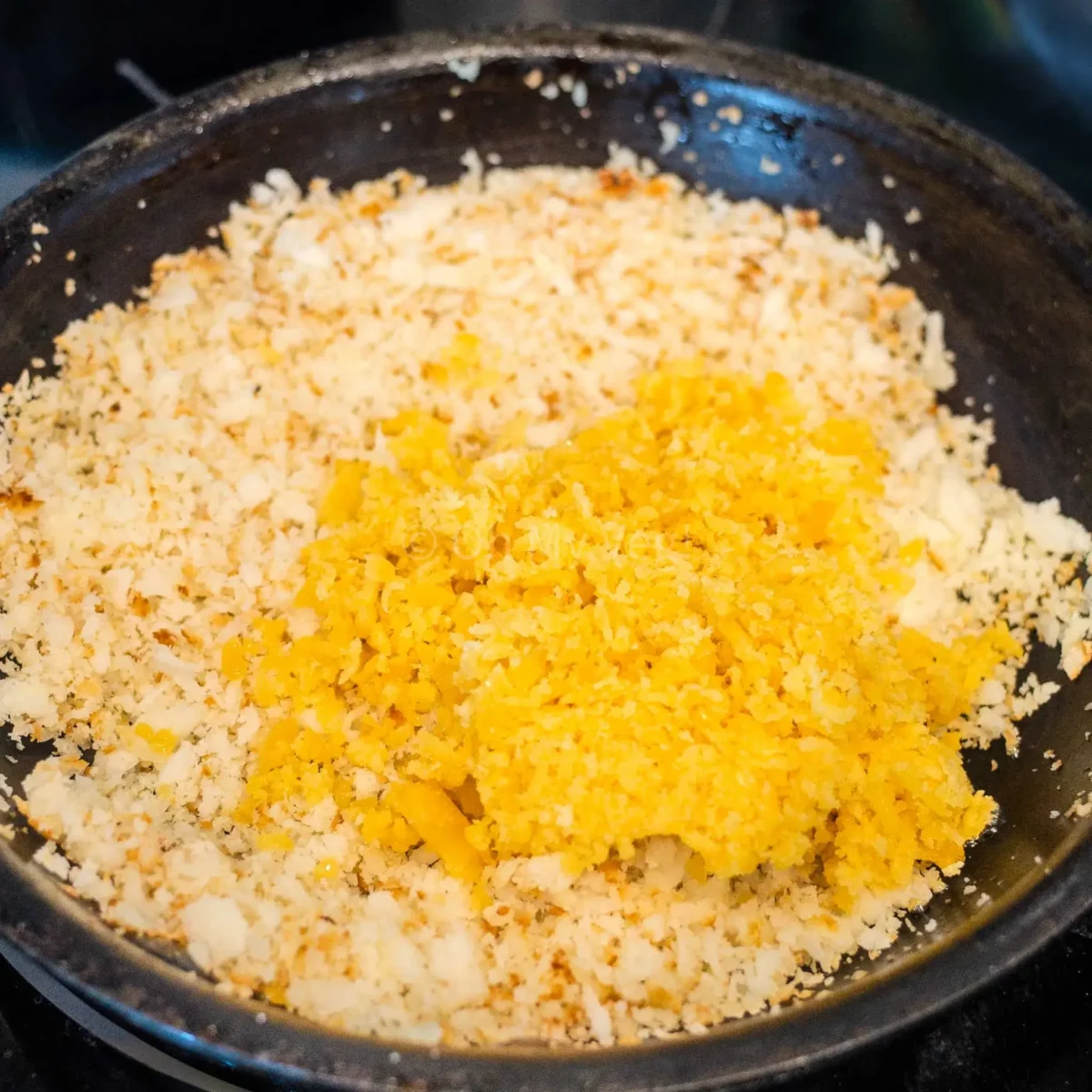
Six: Add grated jaggery to the pan and stir, cooking until the jaggery melts.
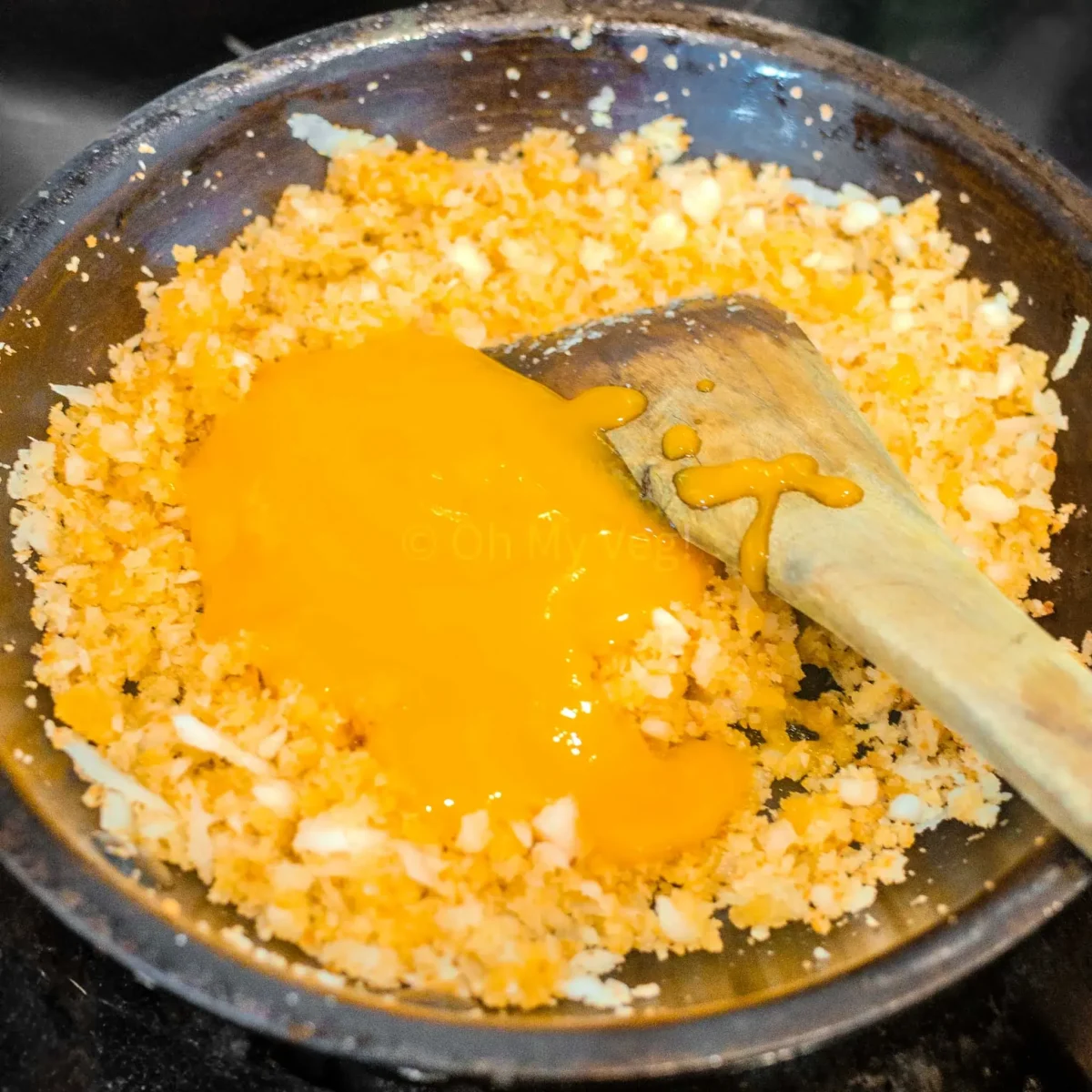
Seven: Add mango pulp to the same pan and mix well. Cook the mixture until thick yet moist.
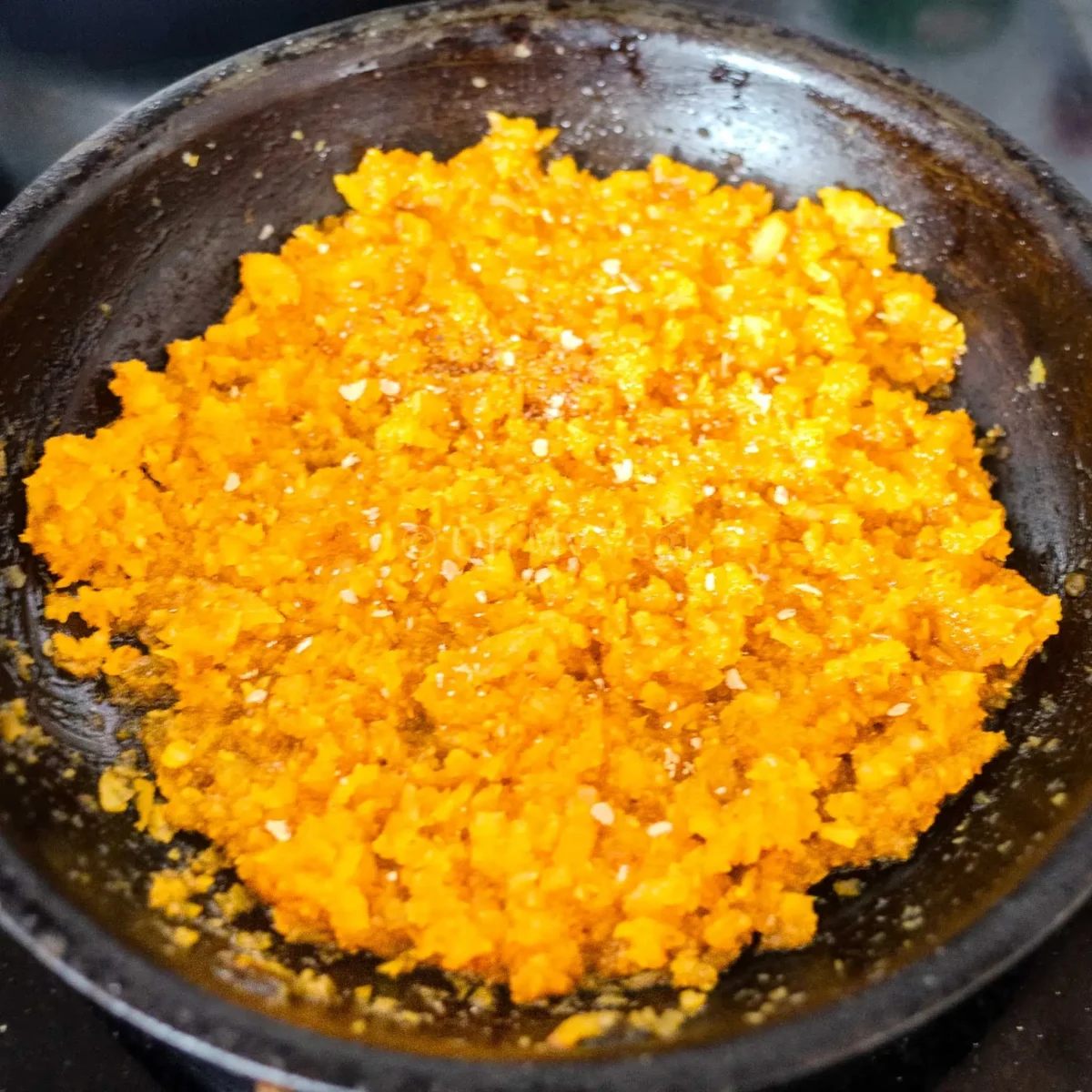
Eight: Add ground nutmeg and cardamom. Stir in. Turn off the heat and cool.
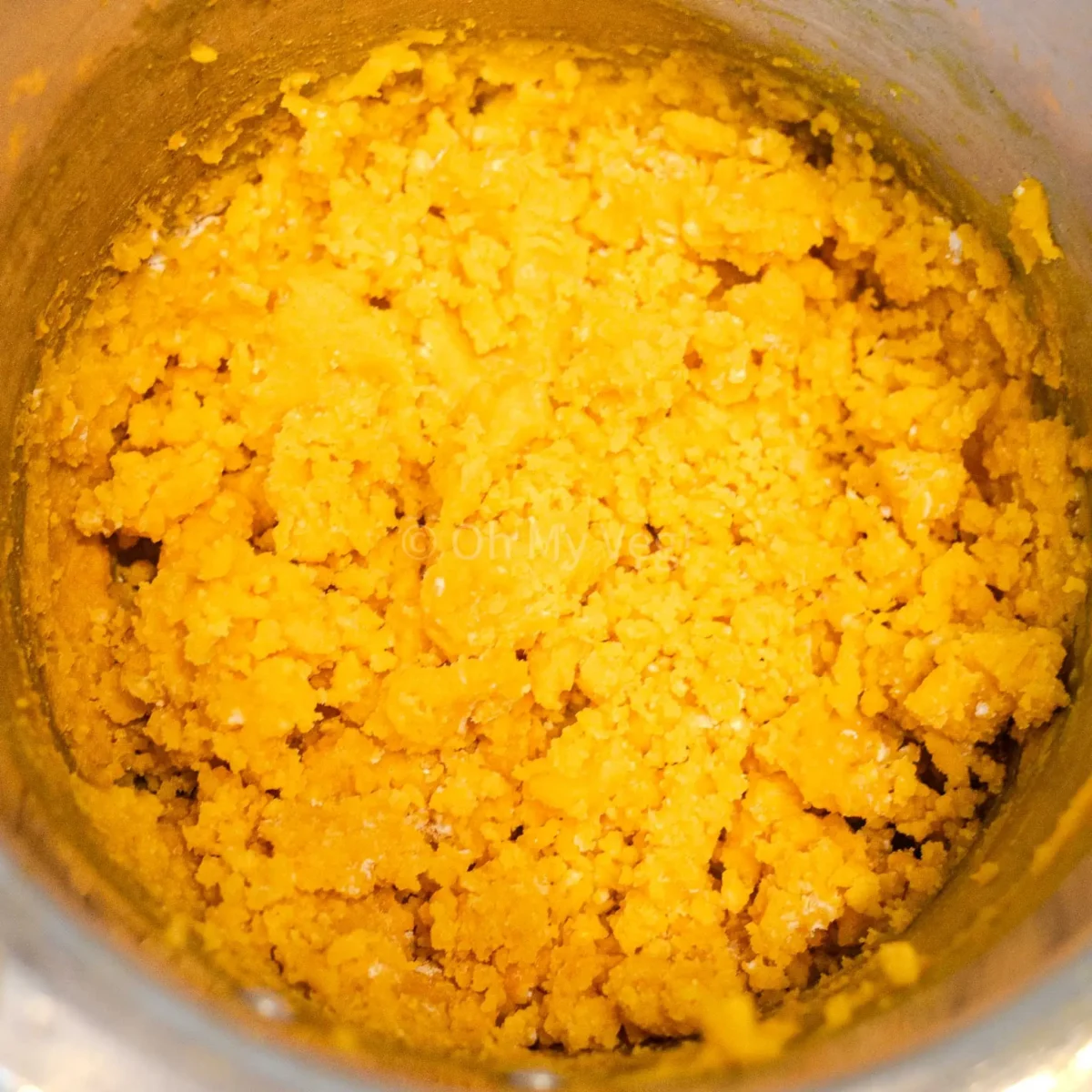
Nine: Remove the lid from the dough. In the ~10 minutes it takes to make the filling, it should have steamed and softened.
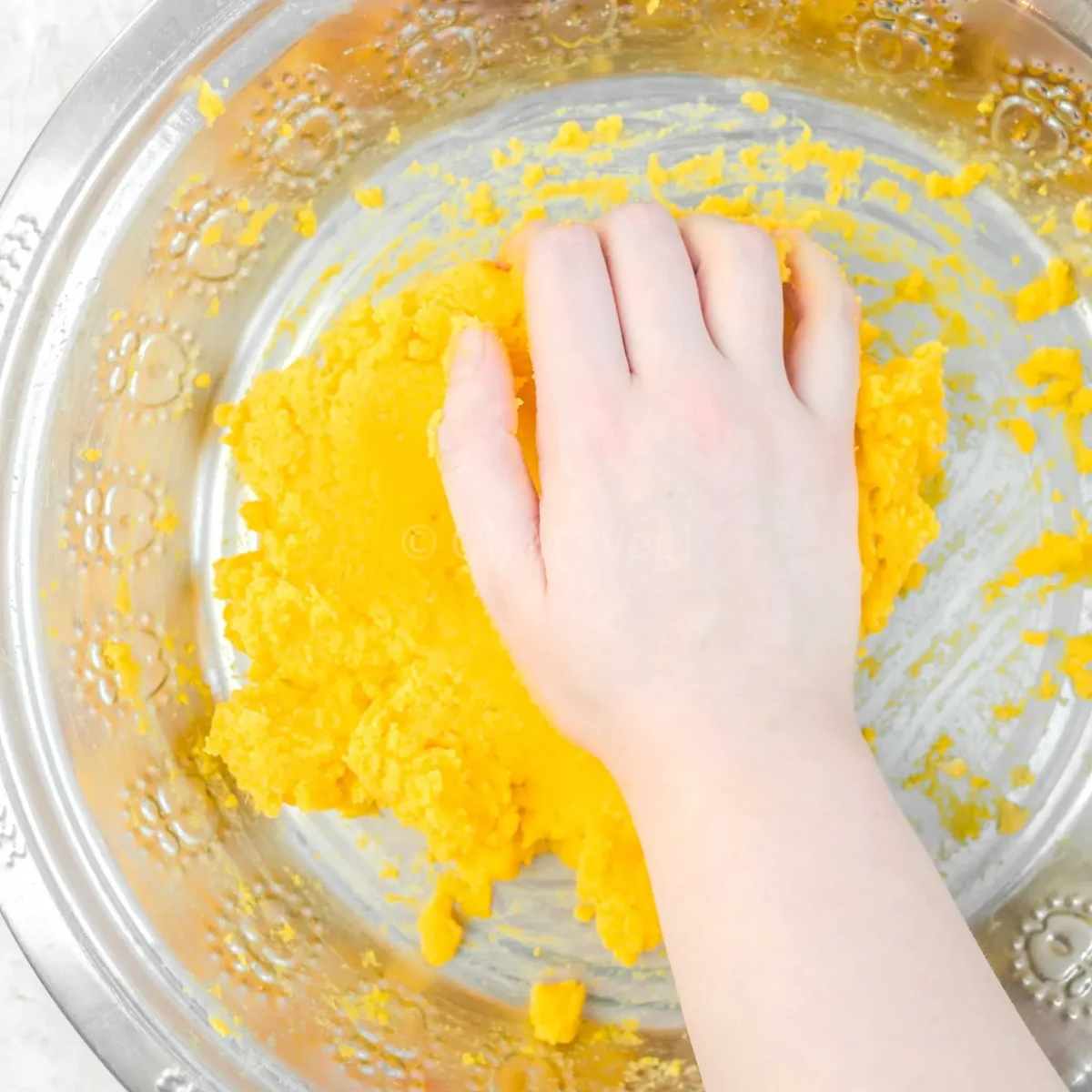
Ten: Tip the modak dough into a parat or large bowl. Knead the mixture until smooth, around 5 minutes. Grease your hands with ghee if it’s too sticky.
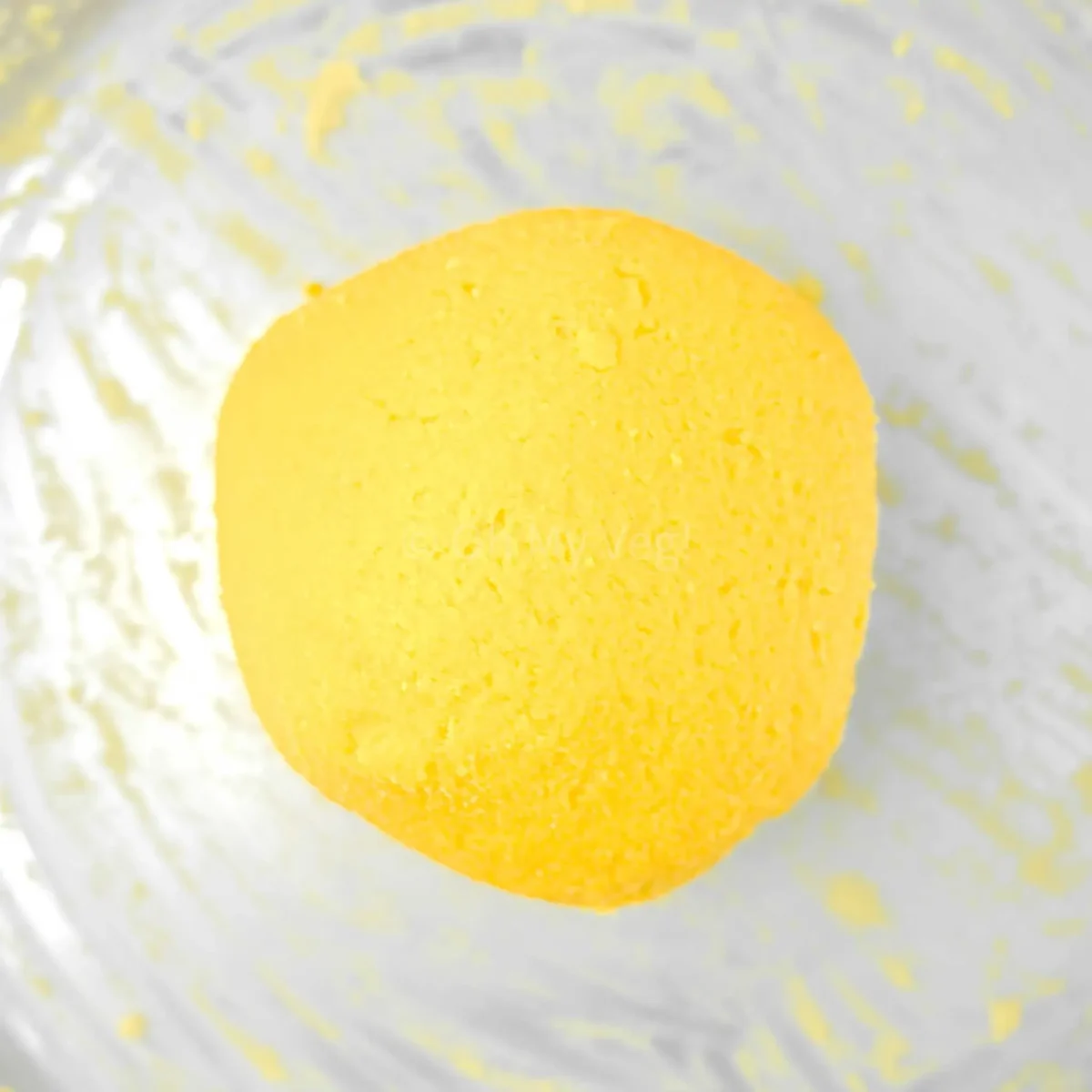
Eleven: The kneaded dough should be smooth and soft, with no lumps. To test it, roll a small ball — the dough shouldn’t have any cracks.
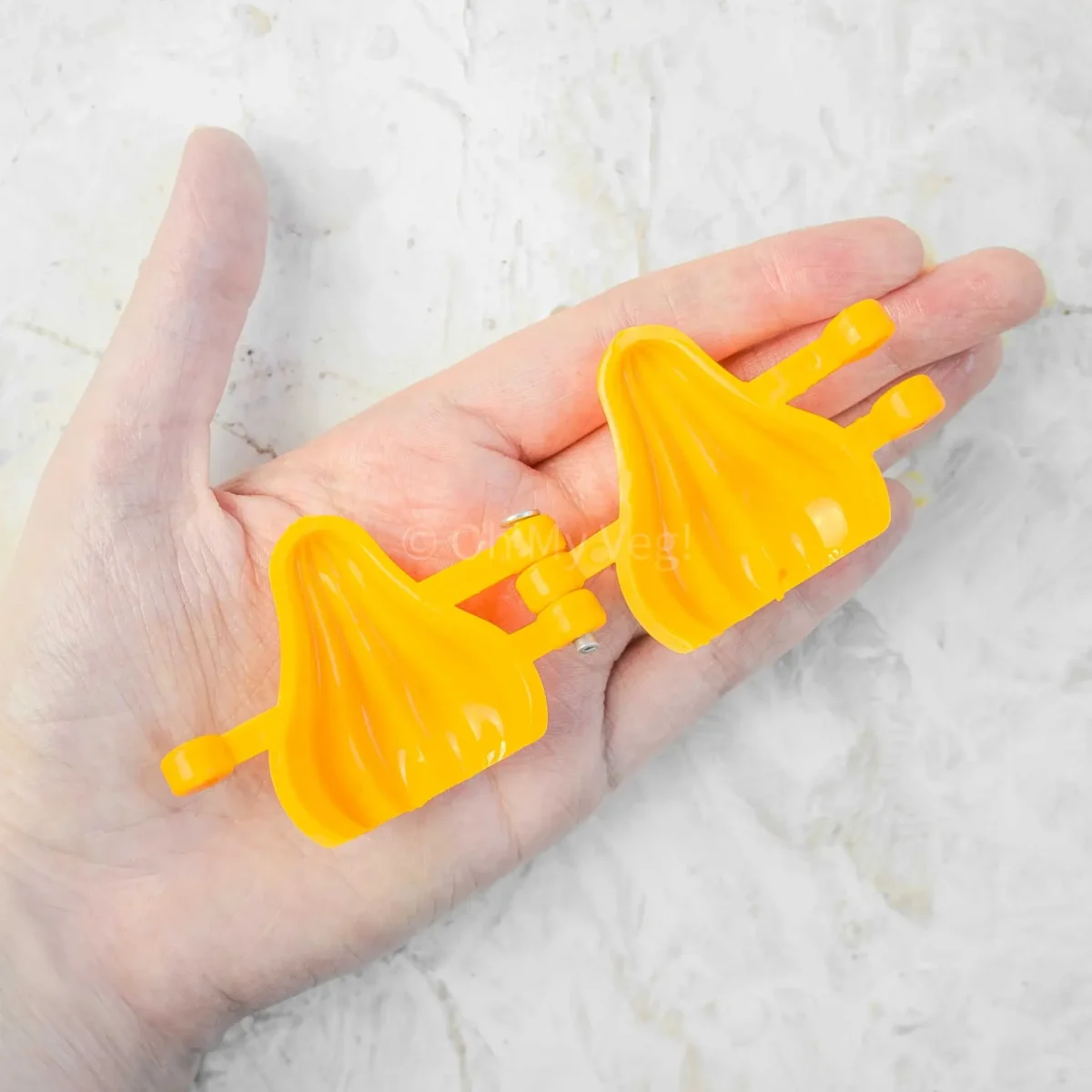
Twelve: Open a modak mould and carefully grease the insides with ghee.
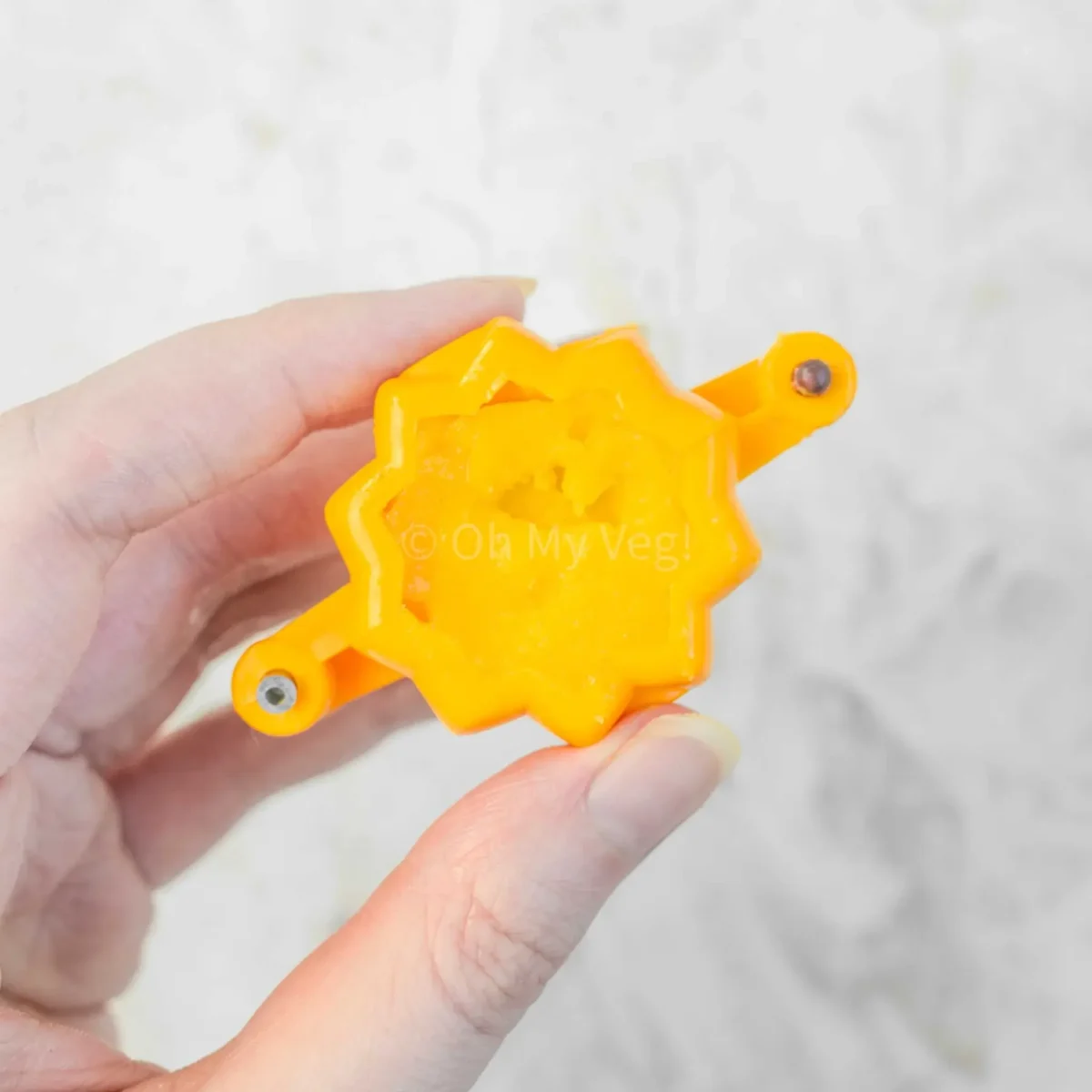
Thirteen: Close the modak mould and stuff it with dough, pushing into all the corners.
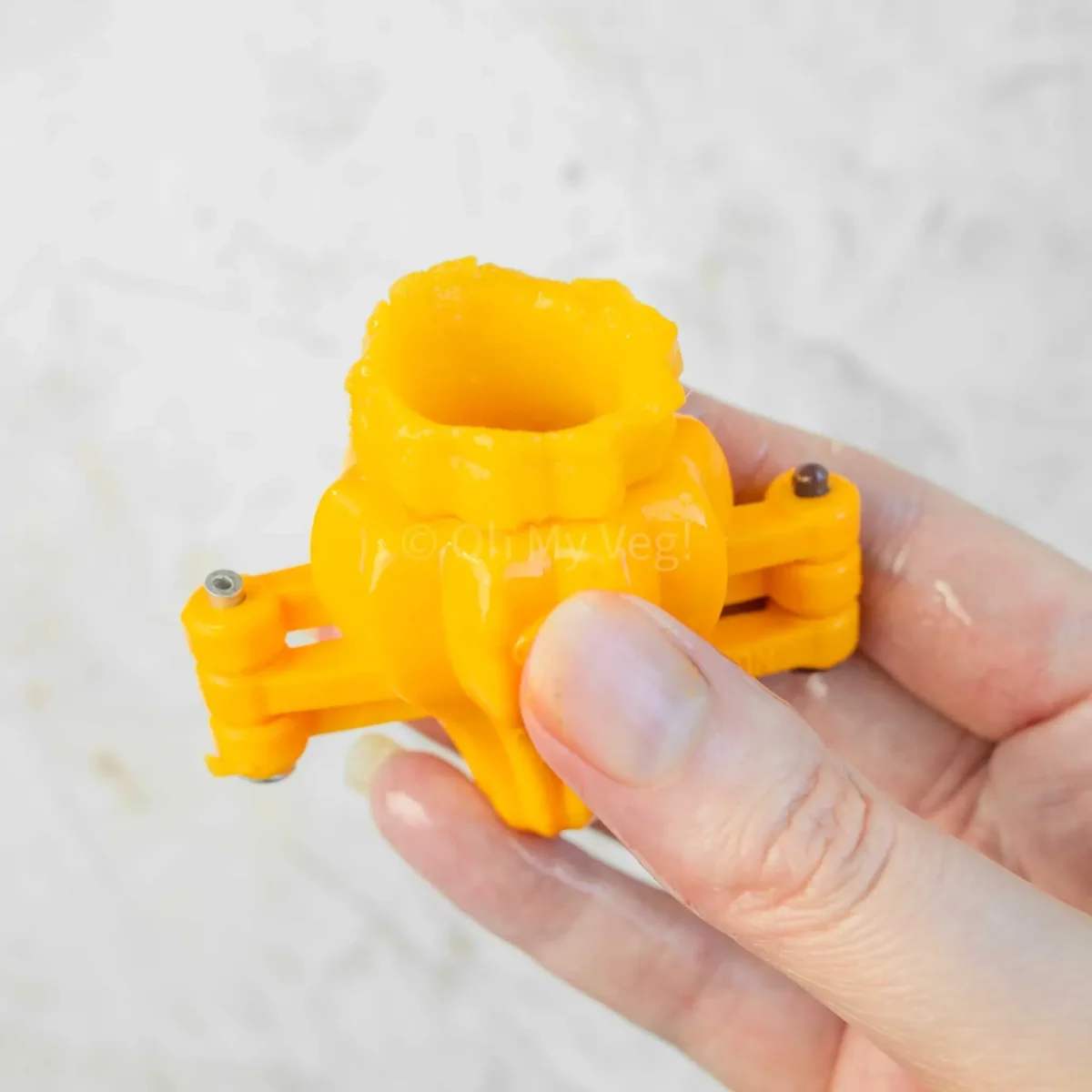
Fourteen: Grease your fingers with ghee and hollow out the modak by carefully pressing the sides.
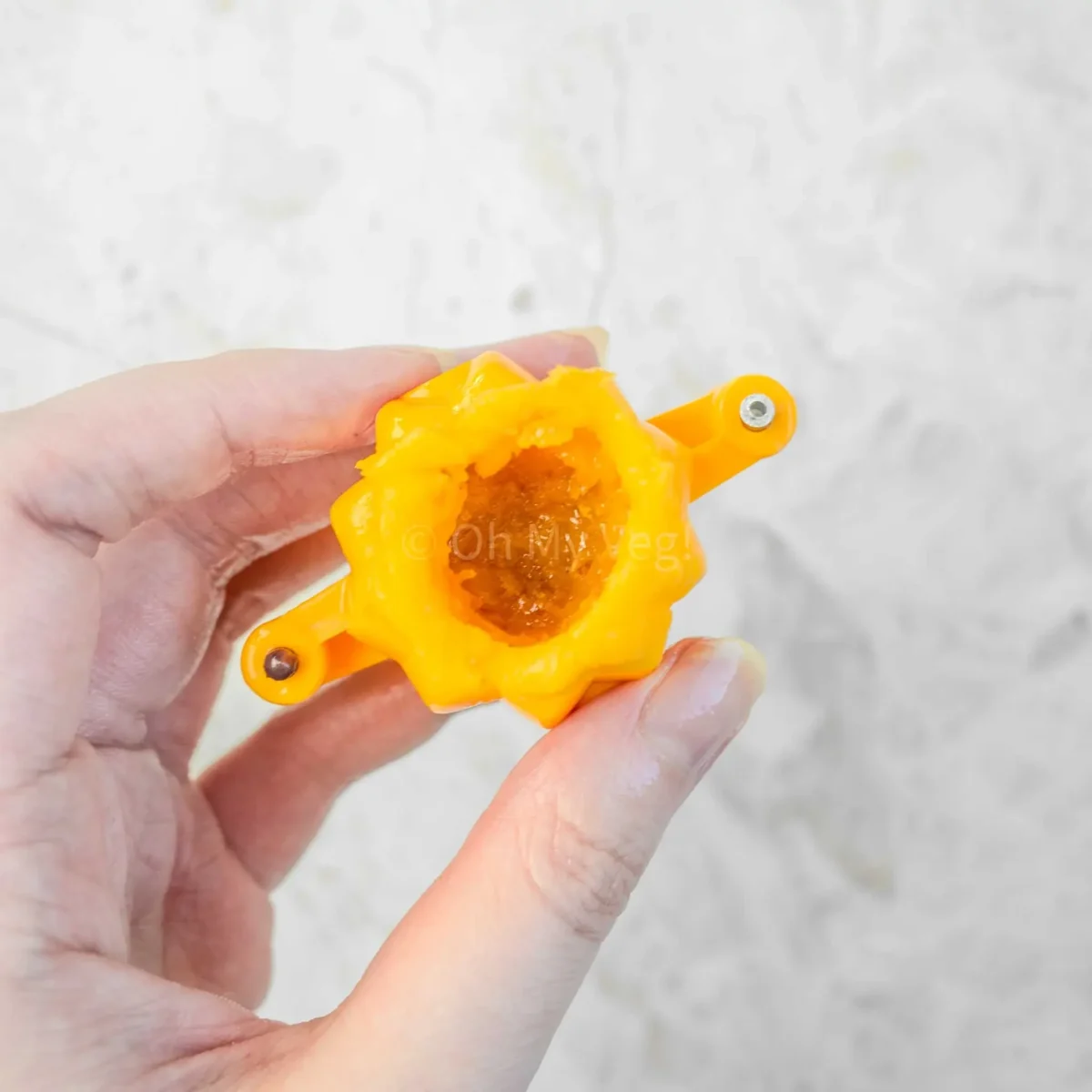
Fifteen: Fill the empty centre with your modak stuffing.
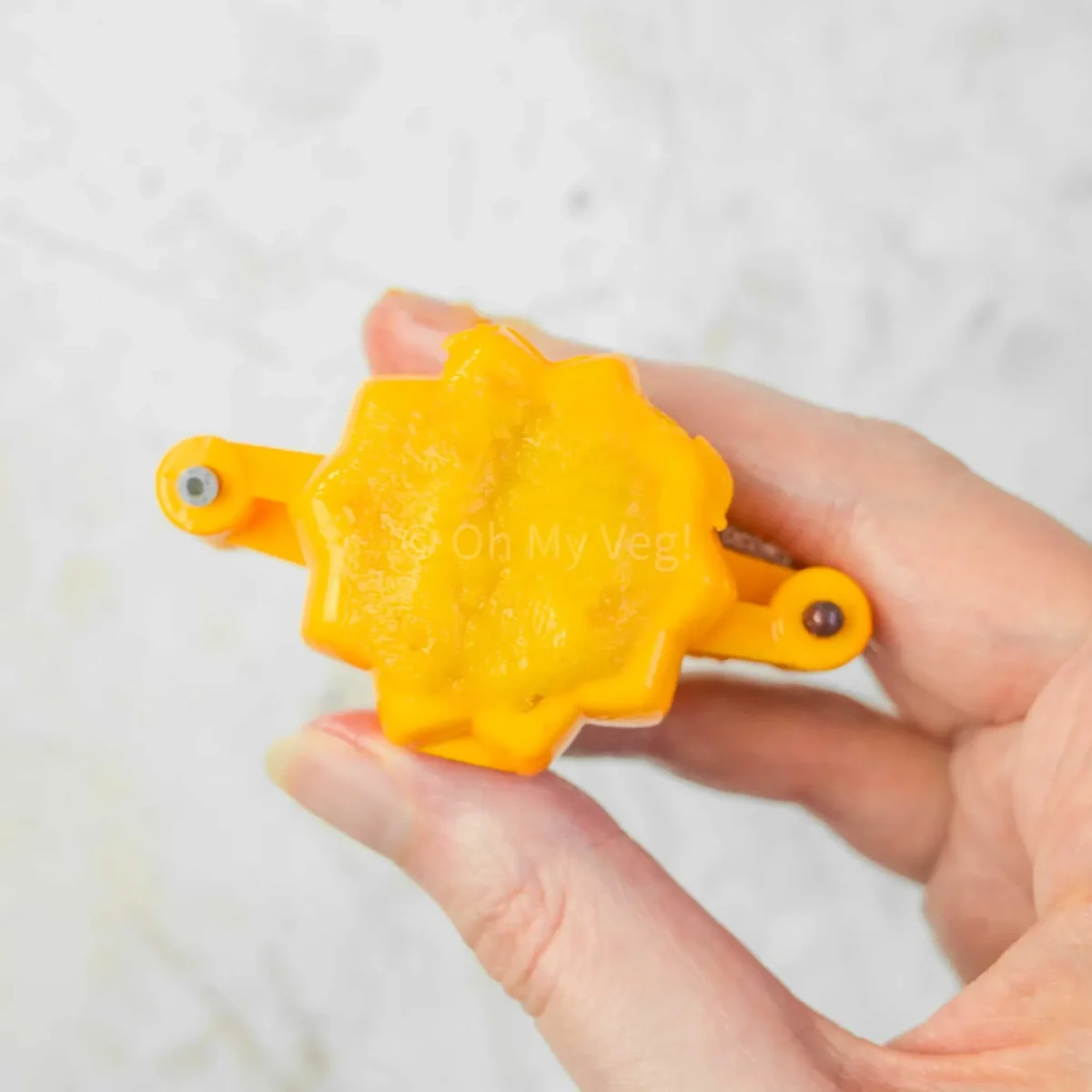
Sixteen: Push the excess dough inwards to close the bottom of the modak.
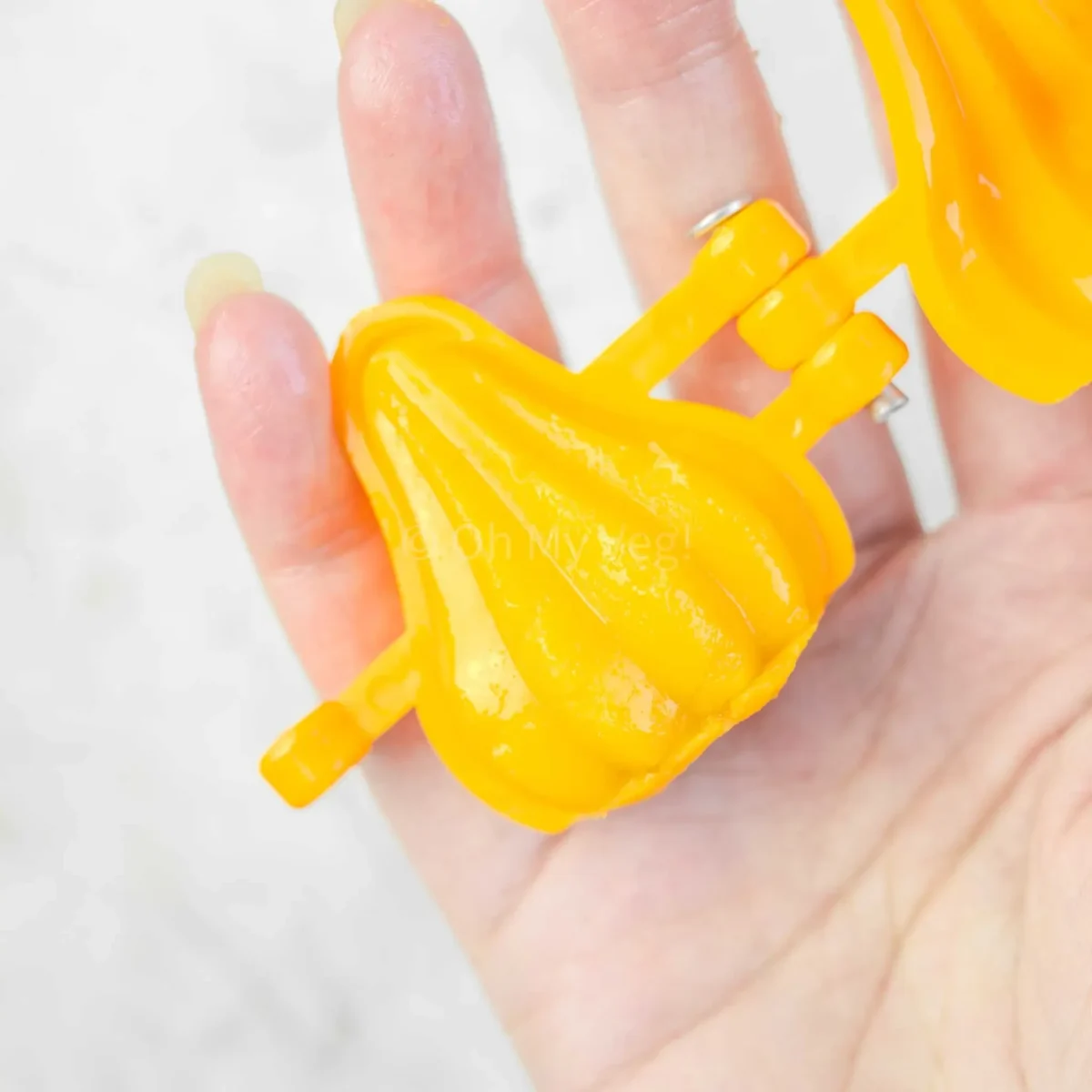
Seventeen: Carefully open the mould and take out your formed modak. Repeat this process (cover the made modak with a damp cloth to avoid drying out).
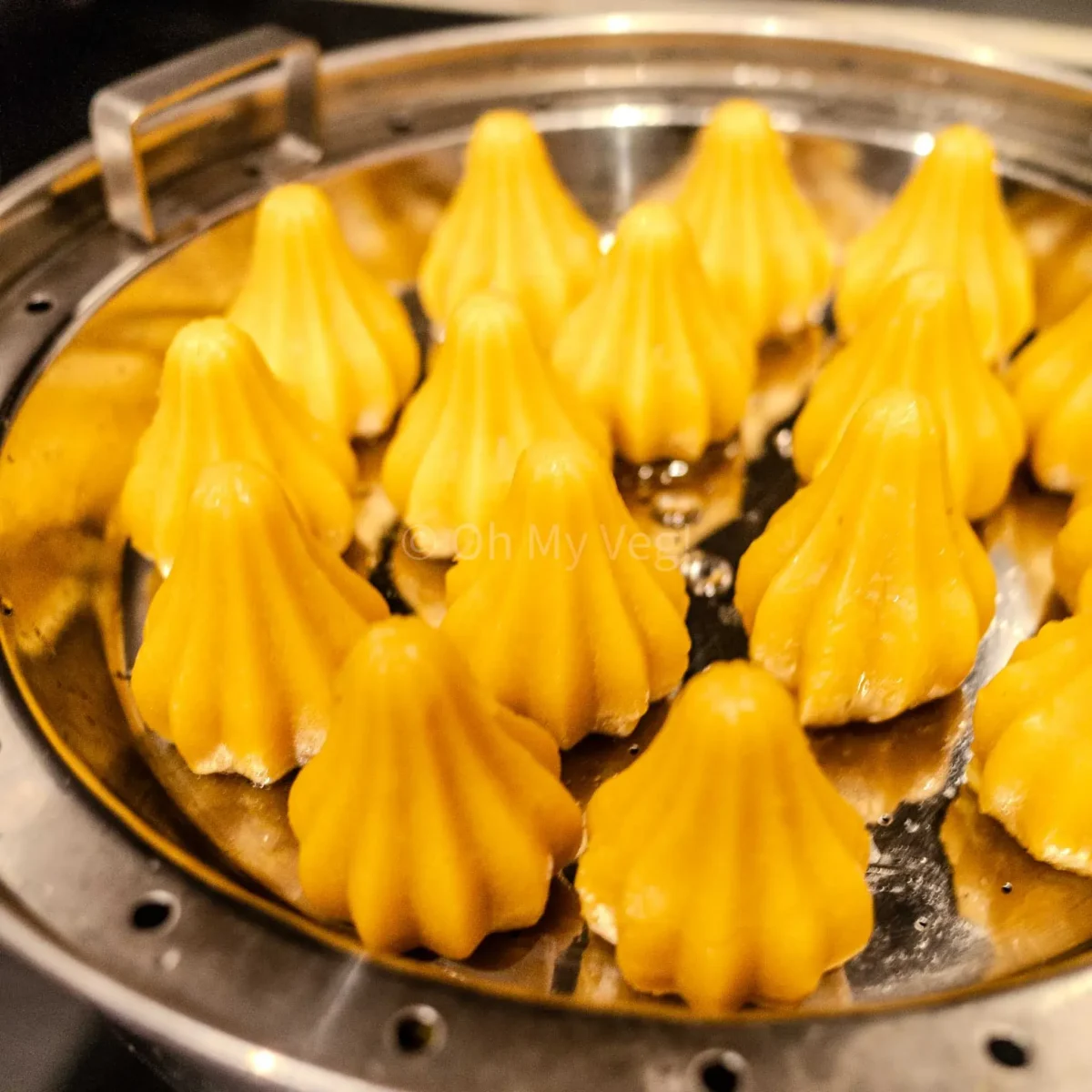
Eighteen: Arrange the modak on greased steamer plates. In the steamer, bring water to a rolling boil. Carefully add the steamer plates with the modak, close with a lid, and cook for 10 minutes.
Remember, the complete recipe (with ingredient quantities and instructions) can be found at the bottom of this page. You can also print the recipe, save the recipe, adjust the servings, and much more from there!
🤯 Secrets For Success
I’ve made plenty of modak in my time. Here’s what I’ve learnt along the way, so you can skip the “attempts” and shoot straight for success!
One of the biggest issues people face when making modak is the outer shell cracking. So, why do modak crack and how can you stop modak cracking?
- Your dough lacks moisture. Most modak recipes use a 1:1 ratio of rice flour to water. However, my mango modak recipe uses a 4:5 ratio of rice flour to liquid, making a beautifully moist dough that’s less prone to cracking.
- You haven’t kneaded the dough properly. Modak dough must be kneaded well. If you prefer a less-messy, hands-free option, you can use a dough hook in a KitchenAid or similar mixer.
- The dough must remain covered with a damp cloth. This applies to dough that hasn’t yet been shaped into modak and to modak that have been shaped, but not steamed. Exposing the dough to air before cooking will dry out the mixture, causing it to crack.
Other great tips include greasing your hands with ghee when shaping the modak (it stops the dough from sticking to you!), and also greasing your modak moulds for easy clean release.
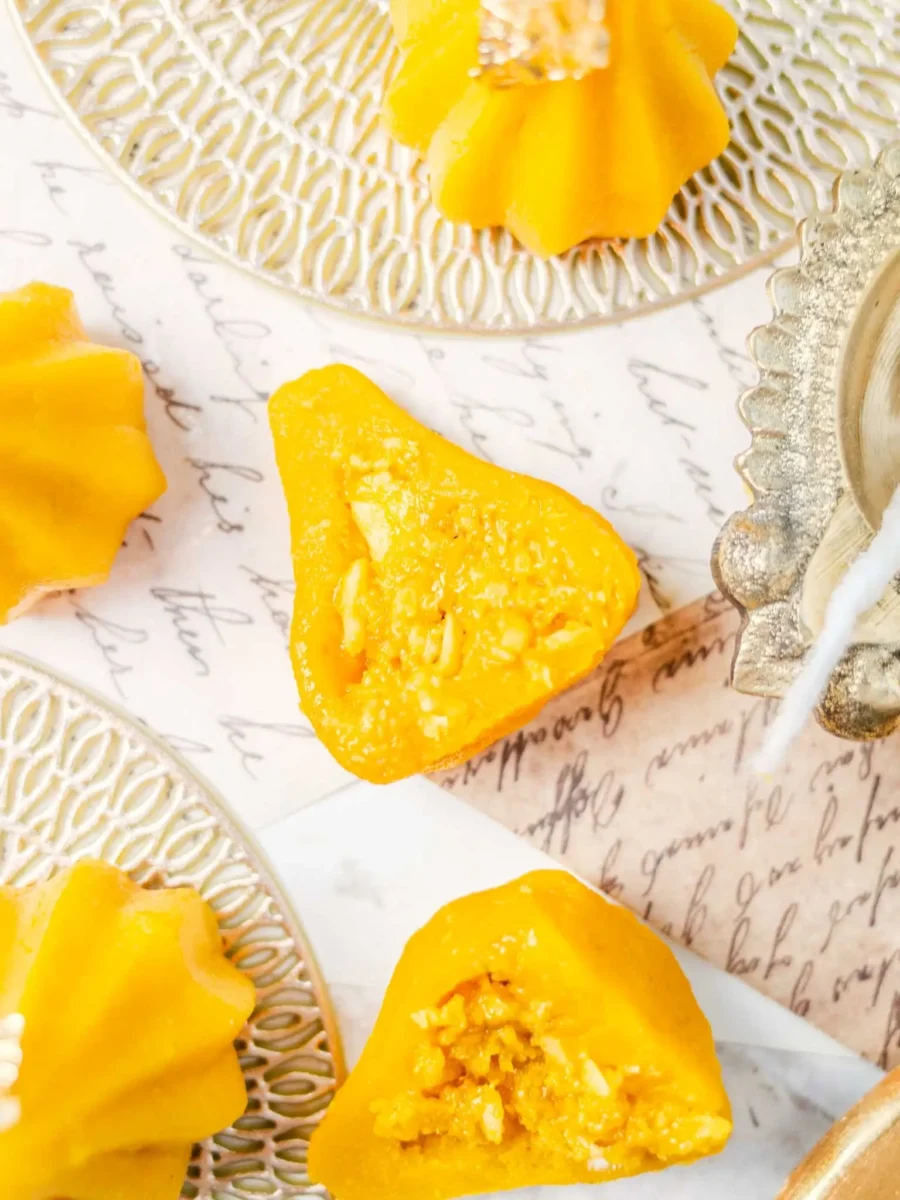
❄️ Storing Mango Modak
If you can’t finish the mango modak within a day, store them in an airtight container and refrigerate for up to 4 days.
To refresh the flavour after storing, briefly steam the modak.
You can even freeze mango modak before cooking. Simply arrange them on a tray until solid, then transfer to an airtight freezer bag or container so they don’t stick together. They’ll keep happily in the freezer for up to 2 months.
To cook mango modak from frozen, don’t defrost. Simply transfer the modak straight to a ghee-greased steamer and cook for 25 minutes. Leave the modak in the steamer (without cooking) for an additional 15 minutes before serving.
🕉️ How to Serve Mango Modak
If you’re making these for Ganesh Chaturthi, be sure to offer them to Lord Ganesh (known as Ganpati Bappa in Marathi) as naivedyam.
According to legend, modak were the only sweet that could truly satisfy Lord Ganesh’s boundless appetite. He was so fond of them that his mother, Goddess Parvati, declared modak his absolute favourite. To this day, he’s lovingly called modakpriya — “the one who loves modak.”
Traditionally, an auspicious 21 modak are offered as naivedyam or prasad. Offer the modak with devotion and celebration in your heart.
Even if you’re not celebrating the festival, that shouldn’t stop you from enjoying mango modak! Serve them with a spoonful of melted ghee (toop in Marathi) drizzled over the top, in traditional Maharashtrian-style.
In my opinion, mango modak taste most delectable fresh from the steamer, when they’re beautifully warm inside. However, you can eat them at room temperature or even cold.
If you tried this mango modak — or any other recipe on my website — please leave a 🌟 star rating and let me know your thoughts in the ✍️ comments at the bottom of the page. Thanks for being a part of my community!
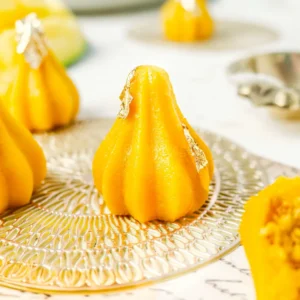
🥭 Mango Modak Recipe
Ingredients
For the Mango Modak Dough
- 150 ml water
- 150 ml mango puree
- 1 pinch sea salt
- ½ teaspoon ghee
- 100 g rice flour
For the Mango Modak Filling
- ⅔ teaspoon ghee
- 65 g grated fresh coconut
- 35 g grated jaggery
- 35 ml mango puree
- 1 pinch nutmeg powder
- 1 pinch cardamom powder
Instructions
Make the Mango Modak Dough
- Add 150 ml water, 150 ml mango puree, 1 pinch sea salt, and ½ teaspoon ghee to a large saucepan set over medium-high heat. Bring the mixture to a rolling boil. Once boiling, add 100 g rice flour and quickly mix. Turn off the heat, cover the pan, and leave to steam in the residual heat for at least 10 minutes.
Make the Mango Modak Filling
- Add ⅔ teaspoon ghee to a pan over medium heat. Once the ghee has melted, add 65 g grated fresh coconut. Cook gently, stirring continuously, until the coconut turns golden. Next, add 35 g grated jaggery. Cook until the jaggery melts and the mixture becomes thick, then add 35 ml mango puree. Stir to mix. Cook the filling until it's thick, yet remains lovely and moist.
- Turn off the heat and season the mango modak filling with 1 pinch nutmeg powder and 1 pinch cardamom powder. Leave to cool down.
Shape the Mango Modak
- Transfer the mango modak dough to a large parat or mixing bowl. Grease your hands with ghee and knead the dough* for 5-10 minutes, or until it forms a smooth, crack-free mixture. Test by rolling a small portion into a ball; it shouldn't have any cracks. Cover the dough with a damp cloth.
- Open your mango modak mould and grease it with ghee.
- Grease your hands and fingers (to prevent the dough from sticking) and stuff the mould with mango modak dough. Be sure to press the dough into every corner. Use a finger to push the dough to the sides of the mould, creating an empty space in the middle.
- Stuff the empty centre with the mango modak filling. Use the excess dough you pushed out to close the bottom of the modak.
- Carefully open the modak mould and take out your fully formed mango modak. Place it on a greased steamer plate and cover with a damp cloth. Repeat this process with all the remaining modak.
Cook the Mango Modak
- Add water to the bottom of your steamer pot and bring it to a boil over medium heat. Carefully lower the plates with the mango modak into the steamer, and cover the pot with a lid. Steam for 10 minutes. Turn off the heat and let the modak sit in the steamer for a further few minutes before serving.



